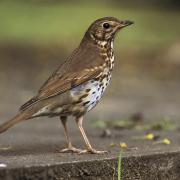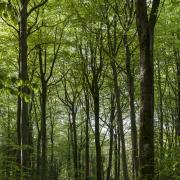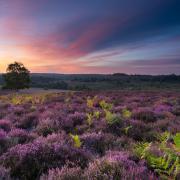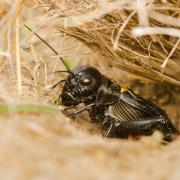New Forest ponies are an iconic sight, yet modern-day pressures pose a constant threat to the traditional landscape. Viv Micklefield heads to Lyndhurst to take stock of what happens inside England’s oldest forest court
“Oyez, oyez,” commands the man in the dock, “All manner of persons who have any presentment to make or matter of thing to do at this Court of Verderers, let them come forward and they shall be heard. God save the Queen.”
Resplendent in his green jacket and black knee-high boots the Agister, as he’s known, cuts rather a dashing figure. The respectful silence however, that instantly falls among the assembled crowd of nigh-on 100 packed into polished wooden pews, reflects how seriously these monthly sessions open to the public are taken. And as the sun streams in through the stained glass windows and the mounted deer heads gaze down (a reminder of the Forest Law once designed to protect William the Conqueror’s hunting interests) the Court gets down to business.
Attached to The Queen’s House at the top of Lyndhurst High Street, and built in the 17th century to replace a much earlier royal residence, this is one of only two Verderers’ Courts left in England. Its powers have waxed and waned over the centuries yet although no longer presiding over a court of law, today’s ten Verderers are empowered to regulate activities and development in order to preserve the Forest’s much loved landscape. Which, in turn, safeguards the future of commoning: the ancient right linked to owning or renting property that allows stock – mainly ponies and cattle – to be grazed on the open Forest. And with the New Forest an increasingly popular destination, the Verderers’ Court is at the heart of many of the issues faced by those living, working and visiting here.
“The Verderers have certain powers of veto if they don’t agree on a proposal being made,” says clerk to the court Sue Westwood. “They also have a set of byelaws that relate to the management of animals and should any of these be broken, they can take the matter before a Magistrates’ Court. The Agisters,” she adds, “are their eyes and ears on the ground and ensure the byelaws are adhered to.”
Andrew Naphine is another of the Agisters in Court today, who’s also a long-time commoner. “We’re employed 24 hours a day, six days a week, and if there are any road traffic accidents or injured stock we get called out.” He continues: “My area covers the north of the Forest from Lyndhurst up to Hampton Ridge, across to Godshill, and down to the racecourse.”
Records since 1956 show that the number of accidents involving commoners’ stock has decreased significantly over the years, from four per cent in 1956 to nought point four per cent in 2017. Sadly though, out of almost 11,000 animals turned out last year, 56 were killed and 22 injured.
Andrew observes: “There are often more incidents when the roads are being salted, because the ponies like to lick off the salt. I can usually identify the animals from their brands and tags, we each get to know the stock within our individual area.”
Which is why, he says, the drifts, beginning in August, are so important. “By the time we’ve finished in November around 40 drifts will have been completed across the Forest. We drive the stock into quieter areas and then sort the animals before worming, checking and tail marking.
“Without commoning the Forest would become overgrown scrubland very quickly. You only have to look at other parts of the country to see the result of this happening.”
Maintaining the Forest landscape requires a responsible approach by everyone involved. And in a recent letter to commoners about ‘poaching’ by cattle, Lord Manners, the Official Verderer who chairs the Court, cautions: “As Brexit looms and we seek to negotiate a scheme of future funding for the Forest and commoning in particular, it is essential that we can continue to hold out commoning as a responsible practice which has high welfare standards, delivers significant environmental benefits and public good and critically, is not responsible for damage to the fabric or fauna of the Forest.”
Meanwhile, giving all members of the public the chance to bring any relevant matter to the Court’s attention, which invites the Verderers to make a decision or take action, remains an essential part of proceedings.
“The Verderers will usually discuss presentments made during the Court’s closed session and then the Official Verderer will make a public announcement at the next meeting,” Sue explains. “If it’s a contentious issue then an announcement may be deferred.
“The Stallion Scheme, which was introduced in 2002, aroused a lot of interest among the commoners. And the draft plans to manage recreation in the New Forest, which is currently being consulted on, is another example of an issue that’s likely to be raised for several Court meetings to come.”
Among the presentments brought before the Verderers today, all of which are required to be summarized within five minutes, one comes from the New Forest Equestrian Association. A response to their safety concerns in the Wootton Bridge area, most likely, to be made once the Verderers have visited the site.
Also seeking debate is the proposal for laying underground high voltage power lines in the north of the Forest, a plea to reduce the speed limit on Forest roads, and greater consideration for elderly walkers by other Forest users.
For those on the front-line, trying to balance tradition with 21st century demands is undoubtedly challenging. Beyond these ancient courtroom walls,
the hum of traffic snaking through Lyndhurst is a reminder of these pressures. Yet as people file out, leaving the Verderers to deliberate, there’s a sense of an indomitable spirit to secure the Forest’s future, as another chapter is written.
More…
• We went to find out what it’s like to live in the New Forest - Outdoorsy types who want to get away from it all should head to the New Forest



























